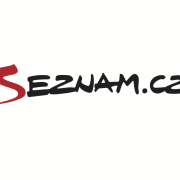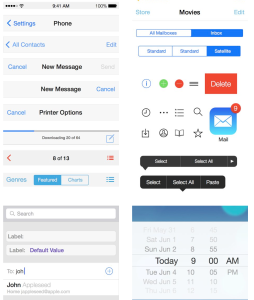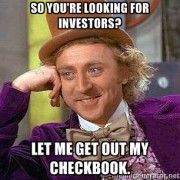What I learned in 18 Months as an Email Marketer (Part 1)
When I took my first marketing job, I assumed that writing was writing, no matter what you were writing about. So I sat down, strapped in, and learned as much as I could about what it takes to write email copy, landing pages, and sales campaigns. Easy, I thought. Turns out, it’s nothing like normal writing at all. Here’s what I learned.
The Call To Action
“Don’t talk about what you want. Talk about what your customer is going to do.”Last week we talked here about selling without selling. I’m going to reiterated the 7 principles that are mentioned in that post. These are the 7 elements that should be represented in some way, in every communication with a customer.
| Trust: In you and the product. Let the customer do what they would normally do. Understanding: Be as simple and clear as possible. The customer is not smarter than you. Emotions: Use humor, use evocative words, show love and caring. Show passion. What to do: Buy, sign up, click, share, read on When to do it: Now? Later? Soon? What I get out of it: Speak about effects of the product, not the features. When it will happen: Examples, case studies, quotes, and testimonials |
Last week we talked about the first 3. Now we’re going to talk about the middle two: what to do, and when to do it.
All of your marketing copy, the copy that is designed to lead a customer from contact with your website or marketing materials all the way to a purchase, has to inspire an action on the part of your customer- to draw the customer inexorably toward a purchase, a sign up, a click, a share, or any action that you want a customer to take.
What it Does
Your calls to action should always be just enough to inspire the viewer to take the next step he/she is comfortable with, and no more, engaging each user to the maximum of their comfort, without scaring them away by pushing them to a sale or action they aren’t ready for. This feeds back to trust: you should never be in the position of asking a customer to do anything he or she doesn’t understand.
If you think of your website or marketing approach as a pinball machine, your customer is the ball. Your marketing emails, landing pages, and homepage are all those little widgets and bumpers that keep the ball moving, and your copy is gravity. When the ball finally ends up falling into the hole, that’s a sale. Here’s the trick: pinball isn’t fun if the slope is too steep, and gravity is too strong. A satisfying sales experience, or any intended customer outcome, is one that feels natural, and rich for the customer. As the customer “bounces,” from one element of your online presence to the other, they should constantly be only in danger of heading towards a sale, never getting there unless they’re ready.
If you think of the customer as the ball, then you shouldn’t worry too much if they don’t go directly to a sale every time. The longer they bounce around and absorb what you do, and who you are, the more likely they are to eventually decide to buy. And the longer they take making the decision, the clearer it will be when they do buy that the product is right for them.
There’s rarely a reason to push: a customer will only ever buy when they are ready to buy, and not before. If you have a lot of hits on your purchase page, but few conversions, then you have probably already realized this: when confronted with a decision to buy, nobody is going to do it earlier than they expected, without a very good reason (that’s where discounts and promotions come in, but that’s another story).
What It Looks Like
Last month, I edited the StartupYard Homepage and a few other landing pages for copy. Our CEO Cedric Maloux had done the layout and the basic copy. Here’s what we started with:
What Are You Working On…?
|
Data We’re looking for the craziest, most ambitious projects out there, having to do with the manipulation of large clusters of Data. |
Search Have you invented a new search algorithm to complete, or compete with, the big boys? We want to hear about it. |
Analytics Do you have a new, unique way of making sense out of Data? We have x TB of data for you to play with. |
This copy is good, but ask yourself: what are you being asked to do? The first line has an open question. That’s a good challenge to go further. Now we get an explanation, under the Data header, of what we’re looking for: “the craziest, most ambitious projects.” Well that’s nice, but what does it mean? Why are you being told all this?
And in the next header under Search, we explain what we want. Nobody wants to know what we want, unless it involves giving them money. And since we actually do want to give you money, why not come out and make that part clear? The site visitor is not sure who this information is for: does it apply to them? Will they find something they are looking for? They are not being given a direction to go in, only information to absorb. That’s only half of what they need. Here’s the copy with calls to action.

Now we have some strong direction. The visitor is being shown what we want, and being pushed to engage to their level of comfort. We have a call to connect in the second column, a challenge in the first, and an invitation in the third column. That’s three ways we’re inviting the user to go further right now. We don’t care how they do that: they can email us, they can read the rest of the homepage, or they can go right to the application. We make it clear here that they’re free to choose. They can seek their own level of comfort with the process.
While it seems superficial, these calls to action have powerful subconscious effects. In Blink, bestselling economics and sociology writer Malcolm Gladwell discusses widely known psycho-social experiments in which individuals are “primed,” with certain words before being placed in a social situation. For example, a person who is told to read a list of words including “patience,” “serenity,” and “calm,” is overwhelmingly more likely to wait patiently for her turn than a person who is told to read words like “aggressive,” “confront” and “fight.”
The words that an individual hears or reads has an enormous impact on how that person behaves in the short period afterwards. Words that prime for activity and exhort action will engender better results virtually all of the time.
Open for Business
Have you ever stood outside a shop or a restaurant, and not been completely sure that they were open, so you didn’t go in? Ever passed a restaurant because it looked closed, only to see someone come out and only then realize it’s open? We all have.
Now, think about those lit-up signs on shop windows; “Come in, We’re Open.” You might think you’re not affected by this kind of thing, but you are. Your confidence, inspired by this tiny little call to action, will empower you to stride directly to the front door and open it. No questions asked.
A homepage is no different. These kinds of calls to action are just a little tiny nudge saying: “We are here for you. This is about you. It’s not a blog, it’s not PR, and it’s not about us, it’s about you.”
A Good Call to Action is not Manipulative.
Sometimes marketers go a little nuts when they figure out that a call to action can be such a powerful thing. What would you do, for example, if I could promise you that I could increase your open rate on emails by 100% in one day? Would you want that?*
*This is a classic call to action, by the way: of course you want to increase your open rate by 100%. You are supposed to say yes.
What they can forget is that no matter how powerful a call to action, you can never sell someone who doesn’t want to be sold. Calls to action are nudges, not shoves.**
**And this is a classic trust-building rejoinder: I am telling you I understand your problem and I understand that the solution is not as easy as some say. I’m showing you that what I’m offering is better than the competition, and that I care about what’s best for you.If I nudge you, you’ll scoot forward in the direction you want to go. If I shove you, you’ll go in the direction I wanted for a moment, and then start resisting me.
This is no different from the store analogy from earlier.
What kind of salesman do you trust? The one who waits for you to look around, then approaches you quietly and asks if you want help? Or the one who approaches you as you walk through the door and asks you what you’re looking for? The first salesman wants to help you. The second salesman wants to control you.
The first one gives you a choice: tell him what you are looking for, or say no, you don’t need help. Either way, you do what you want. The second makes a demand: tell me what you’re looking for, or break all trust, and lie, saying you are “just looking.” Either way, you are forced to choose between two options you may not like.
You may buy from the second salesman if you know exactly what you want, but you wouldn’t buy from him if you weren’t sure. You haven’t been given the space to establish comfort with his offerings, before he is pushing on you to tell him what you want to buy. And if he is very good, and manages to get you to make a purchase before you’re ready, you would never, ever return to that store. Your embarrassment would be too great. You’d associate him, and that product you bought, with an experience you’d rather forget. This is not a win for anyone.
Online marketing is no different. People know when they are being invited, and when they are being pursued. And they don’t like being pursued in that context.
Do you get those emails from click-bait websites, with some video and a headline that says: “Drop Everything Right Now and Watch This or You Will Be Sorry,” or something to that effect? We’ve all been there. Or maybe you see those chain letters on Facebook, that manipulate you into sharing some overly sweet piece of human misery, that turns out wasn’t true in the first place?
Yes, they work. Once. And while you can get a lot of traffic from a sensational headline, and a big email open rate from a grabby subject line, that’s all you’ll get: traffic. Because people know when they are being manipulated, and they don’t like it.
This kind of marketing is for ad-driven spam sites, not for an honest product site that is actually offering people something they need. So don’t be a manipulative bastard. It doesn’t work anyway.
[ssba]








